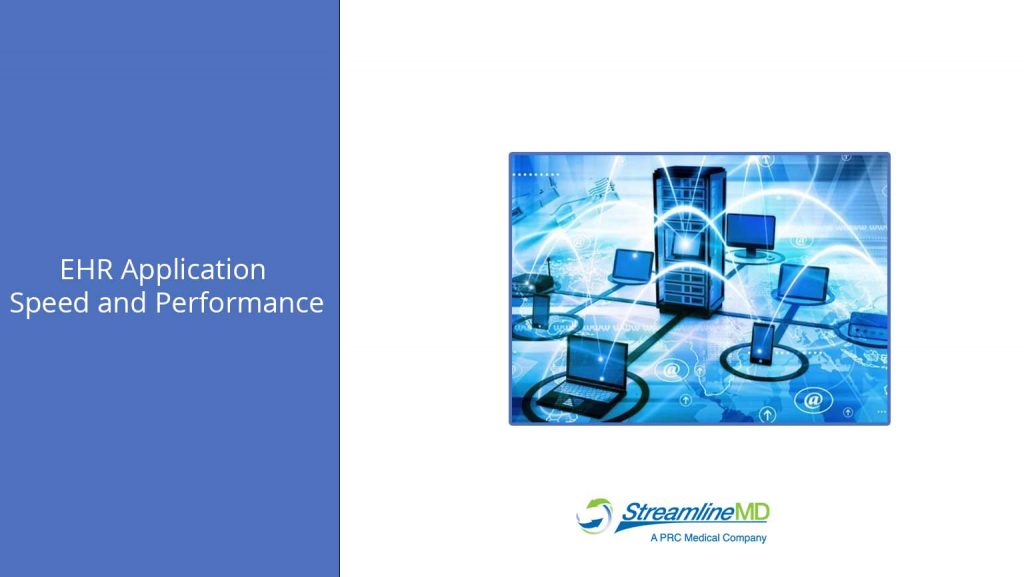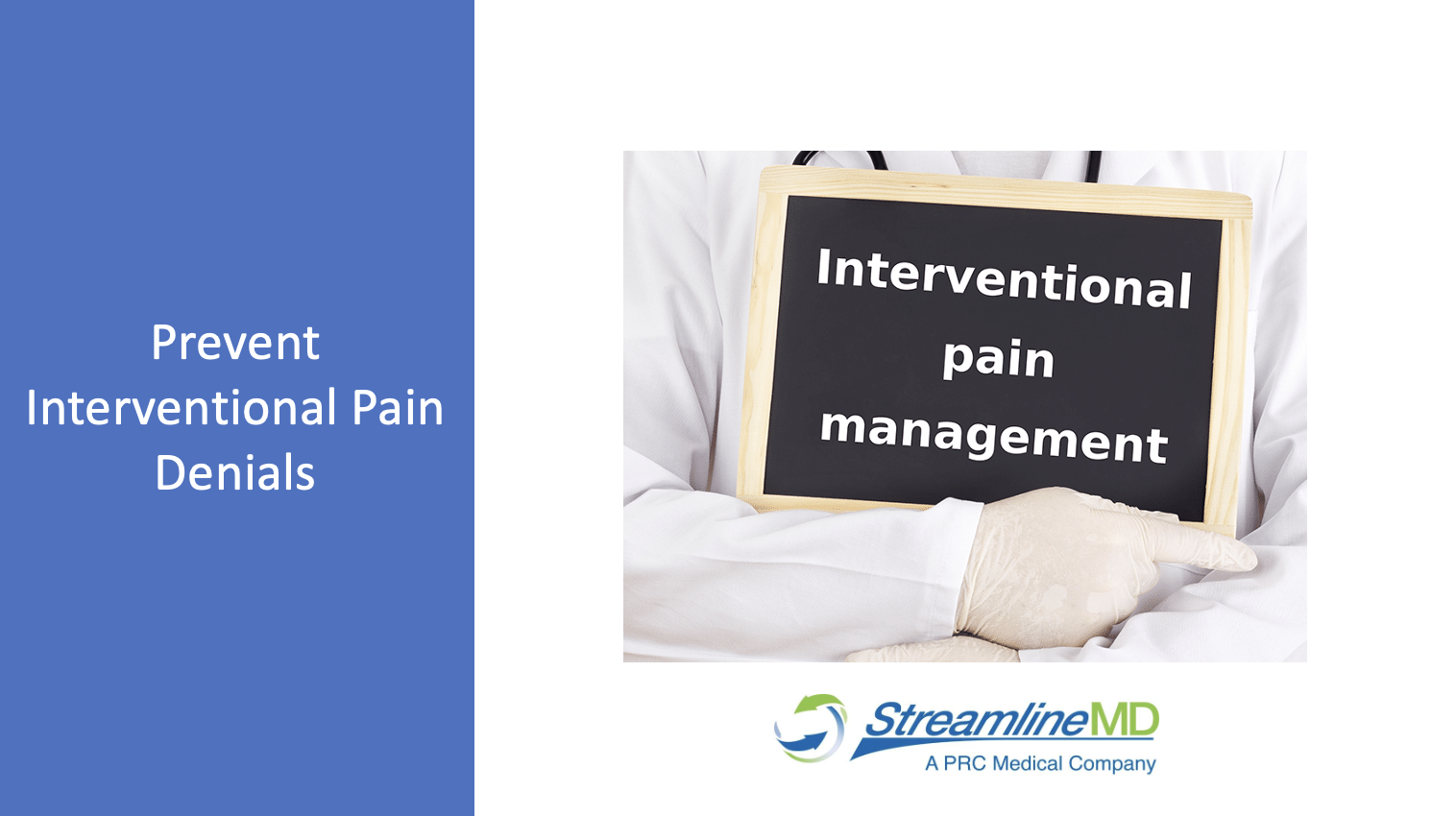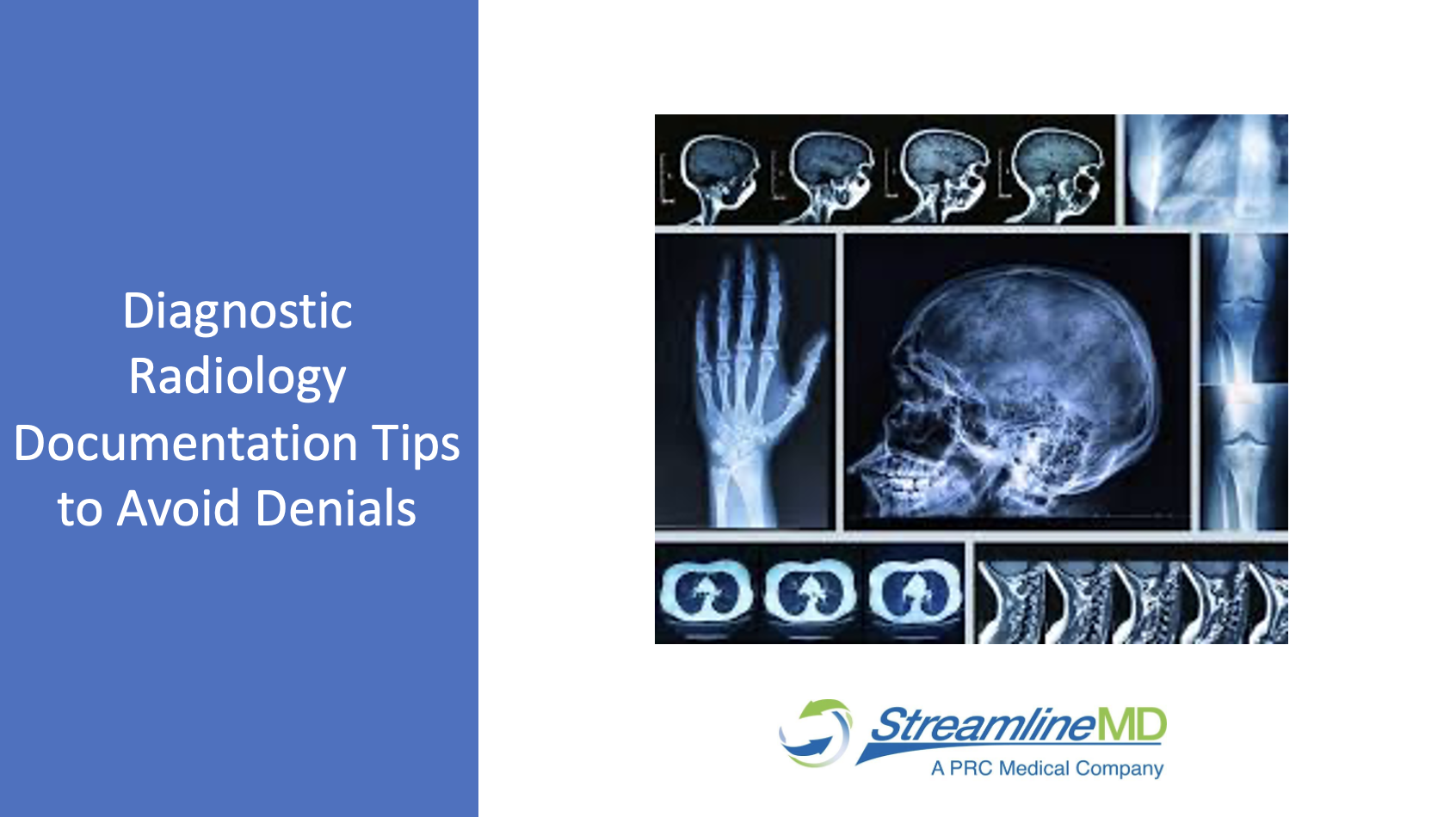Invest in your Medical Office IT Network to maximize your overall EHR application speed and performance
It’s common for physicians in independent practice to experience inconsistent speed and performance from their office-based workflow applications, particularly cloud-based electronic health records (EHR) and revenue cycle management (RCM) software. While it is interesting to think about housing such applications within the practice, we live in a rapidly advancing world of technology with everything heading to “the cloud”. And in reality, managing an “inhouse” network and server hosting equipment is not a panacea. It has its own challenges and is likely more complicated and expensive with today’s technology. This article will discuss how to invest in your Medical Office IT Network to maximize your overall EHR application speed and performance experience to adapt to this trend.
Your IT Network Chain Is Only As Strong As Its Weakest Link
To access cloud-based /internet-hosted software applications, the user experience will travel through several components of technology (Chain Links) to get to the Internet and back. Understanding the components and working with your IT resources will help you improve your overall experience.
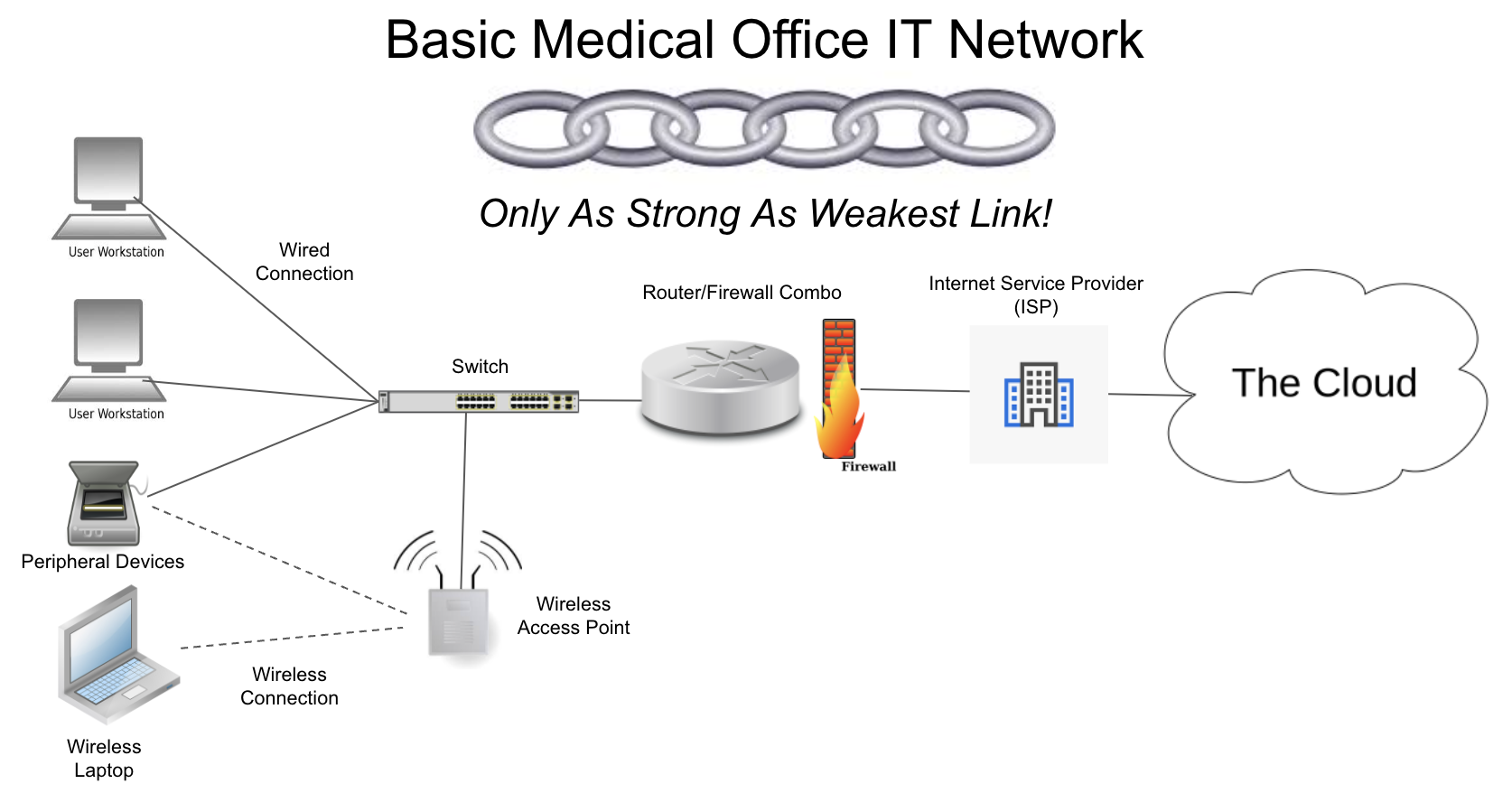
Invest in Commercial/Business-Grade Equipment: Many practice owners try to cut corners to save money by buying “consumer” grade equipment and getting IT advice from relatives and friends. Do yourself a favor and invest in your medical office IT network by working with IT professionals and installing business-grade computer equipment. For more info on this and links to StreamlineMD’s recommended equipment and products, please see: https://streamlinemd.com/wp-content/uploads/2023/09/Exhibit204TRS-ver2023-10-01TS.pdf
User Workstations: Whether your workstation is a desktop, laptop, or mobile device, modern software requires modern hardware and operating systems. Keep your hardware and software “current” by keeping your equipment and software up to date. A benefit of working with cloud-based software platforms, such as StreamlineMD EHR, is that the software is routinely updated with enhancements, bug fixes, and patches. Not only do these updates improve performance, they also provide enhanced security against constantly evolving viruses and ransomware. Invest in business-grade computer equipment and keep it updated.
IT Network Cables: Networking hardware used to connect one network device to other network devices or to connect two or more computers to share printers, scanners etc. This is a very important part of the infrastructure, quality in this area should not be overlooked.
Wireless Access Points: A networking hardware device that allows Wi-Fi devices to connect to a wired network.
Switches: Connects devices within a network, such as a local area network (LAN) and forwards data packets to and from those devices. Unlike a router, a switch only sends data to the single device it is intended for (which may be another switch, a router, or a user’s computer), not to networks of multiple devices.
Routers/Firewalls: Routers select paths for data packets to cross networks and reach their destinations. Routers do this by connecting with different networks and forwarding data from network to network — including LANs, wide area networks (WANs), or autonomous systems, which are the large networks that make up the Internet. In practice, what this means is that routers are necessary for an Internet connection, while switches are only used for interconnecting devices. It’s common for Routers to have built-in Firewalls to provide necessary network security.
Internet Service Providers (ISP): This is the company you pay for Internet service, such as Spectrum, Comcast, AT&T, etc. The level of service you purchase and receive from your ISP is critical to your experience. Most consumers focus on “Download” speed. But like other commercial/business operators, medical practice owners must equally consider “Upload” speed. For more details on this, please see https://streamlinemd.com/medical-practice-internet-bandwidth. To test your Download and Upload speed, please see https://www.speakeasy.net/speedtest/.
The Cloud: Servers that are accessed over the Internet, and the software and databases that run on those servers. The cloud enables users to access the same files and applications from almost any device, because the computing and storage takes place on servers in a data center, instead of locally on the user device. Software-as-a-Service (SaaS) companies, like StreamlineMD, manage these cloud-based servers on the behalf of clients, which provides clients with secure access to the latest software versions, enhancements and updates simultaneously in real-time. This framework also provides data redundancy and security in the event of network or Internet service outages.
Peripheral Devices: Generally considered to be wired and/or wireless printers, scanners, cameras, and other secondary devices connected to your network.
Office Network Uses and Schedules: Medical offices have many staff members accessing peripheral devices and various aspects of the office IT network throughout the day, all of which are consuming IT network and Internet capacity. Activities include the use of cloud-based software, scanning and faxing documents, uploading/downloading clinical images, and casual Internet browsing and streaming. At any point in the day, a confluence of such activity can consume the full capacity of your network and Internet access and affect your experience.
Remote Network Monitoring: Devices can be installed in the medical practice office’s local IT network to monitor and report network activity in an effort to identify activities, referenced above, that are consuming network and Internet bandwidth throughout the day. This requires the careful coordination of your IT vendor/resources and StreamlineMD IT professionals. Using this monitoring technology, we’ve successfully worked with medical practice clients to pinpoint and address particular office users and activities that disrupt network performance throughout the day. If you are interested in discussing this, please email helpdesk@streamlinemd.com for further assistance.
Below is an example of a network monitoring graph. The purple line is the bandwidth limit, which, if exceeded by capacity consumption spikes in the red or green lines, will cause noticeable slowdowns and degradation of performance a various times throughout the day.
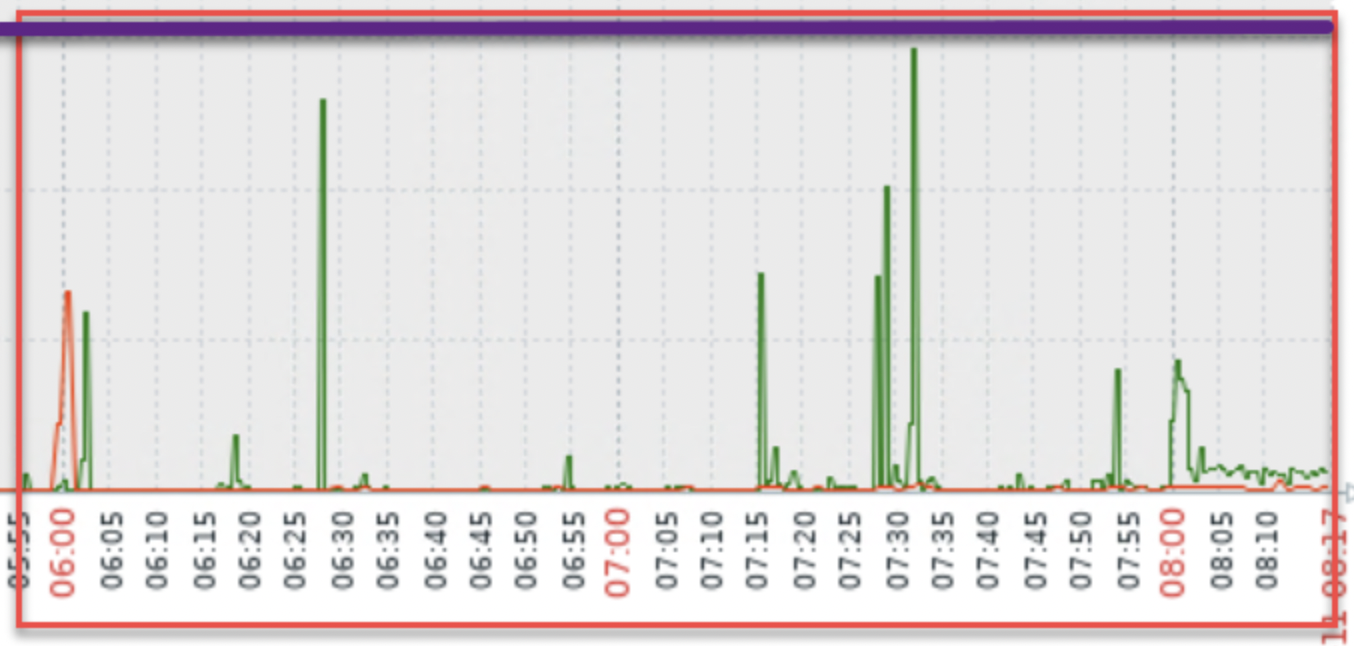
EHR Application Configuration: The configuration of your Electronic Health Record (EHR) content can be set for optimal performance and experience. StreamlineMD’s Helpdesk at helpdesk@streamlinemd.com can assist you to ensure the recommended settings below are in place:
Dashboard Settings
- Set Duration to ‘3 months’
- Enable Document Filter
Health Summary
- Set Duration to ‘3 months’
Document View
- Set Duration to ‘3 months’
- Turn off the Chart Summary along left side and use Health Summary in its place.
- Use the filter across the top of the chart to identify documents that might not need to be seen when opening the chart.
Diagnosis Codes
- Removed Diagnosis Codes from templates if the codes are not template specific. For example, if the favorite Diagnosis Codes are used throughout all templates, these codes should be removed from the template since these codes will display when accessing that section.
Conclusion: Your medical practice is a business and it’s critical that you invest in, update and monitor your computer and IT infrastructure accordingly, and ensure that you engage with StreamlineMD to set your EHR configuration for optimal performance. StreamlineMD is here to help.
Please see our Technology Requirements Document for our recommended equipment and configurations for optimal performance, and please reach out to helpdesk@streamlinemd.com for further assistance.
References:
https://streamlinemd.com/support/client-equipment-specs
https://www.speakeasy.net/speedtest/

